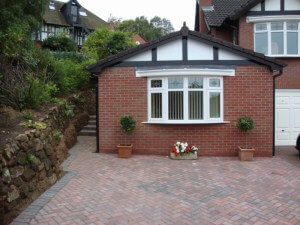Legislation Re-Think on Stamp Duty for Granny Flats
Legislation Re-Think on Stamp Duty for Granny Flats

Ministers have announced changes to the rules around the new stamp duty charge on second homes, after it emerged that people buying homes with granny flats would face higher tax bills.
Gary Bunce (Head of Residential Property at IBB Solicitors) said:
“The introduction of the higher rate of SDLT on April 1st is impacting upon more transactions than people realise. For example, the higher rate of stamp duty land tax (SDLT) can be triggered in a “Bank of Mum and Dad” assisted purchase where the parents want to record a beneficial interest in the new property whilst still owning other property. In addition, the new SDLT rules relating to Granny annexes and flats are grossly unfair where families are trying to economise or simply do the right thing for an elderly relative. It is pleasing to note that there may be some changes made to the current rules on this type of transaction. Clearly, valuing an annex in the changing property market conditions could prove to be an issue however. Buyers, parents, trustees, investors and companies must seek advice from a tax adviser and solicitor when considering SDLT because it has become a bit of minefield.”
The new plans to tax granny flats were described by pensioner groups and elderly campaigners as “morally wrong and economically illiterate” and would force grandparents to move away from their families and into care homes.
The new charge, which came into force on April 1st, meant that anyone buying a second property would pay a rate of stamp duty land tax (SDLT) that is three percentage points higher than the rate paid on a main home costing the same.
The original rules stated that purchasers of property with more than one unit – for example, a house with a granny flat or holiday home – would be treated as if they were buying a second home and would pay far more tax. A multiple dwelling relief was available, but even with this buyers would pay more tax than if they were just buying a single property.
However, an amendment to the Finance Bill announced on the floor of the House of Commons will mean annexes, when purchased alongside a main residence in the same transaction, will in most instances not now be subject to the higher rates of SDLT that second homes are. Instead, the standard rates of SDLT will apply to the entire transaction value.
Under the changes, which have yet to come into law, the higher rate of SDLT will only be applied if the additional home is worth at least a third of the total price being paid.
Johnny Morris, research director at estate agency group Countrywide, estimates around 140,000 properties have annexes, with most not worth more than a third of the total value. “The change would seem to put the issue mostly to bed,” he says.
A Treasury source said the change “irons out a small, technical unfairness and will mean transactions including annexes will now be subject to the same rate of tax as a main residence. It ensures the legislation fits with the intention of how the SDLT higher rate should work.”
It is not yet clear when the new rules will come into force, but the Treasury says anyone paying the higher rate now will be able to collect a refund.
The granny flat boom
A growing number of homeowners are building granny flats to house elderly relatives or grown-up children, according to figures from the Valuation Office Agency. In just two years, 9,330 new annexes have been built in England and Wales, according to the agency. This has pushed the total number of granny flats to 33,480 – a 39% increase.
Paula Higgins, chief executive of the HomeOwners Alliance, said: ‘Sky-high housing costs are forcing homeowners to be ever more inventive … In some cases it’s desperation, but there are upsides – it can be good for extended family relations.”
Council tax discounts for granny flats
Home owners who have an annex occupied by a family member can apply for a 50% council tax discount.
Prior to April 2014, anyone who built a separate flat with its own front door had to pay full council tax on it, unless the occupant was a dependent. Now home owners who have an annex occupied by a family member can apply for the discount.
Andrew Bulmer, residential director of the Royal Institution of Chartered Surveyors, said: “It has been an issue for families with an annex who have been hit with two lots of council tax.”
The Government has estimated that the tax discount will help households save, on average, £485 a year, based on a combined council tax bill of £2,427.
If the property is sold, however, the annex may be liable for capital gains tax if it is not classified as the home owner’s main residence. Tax experts say it is important for families to discuss their plans with a financial adviser.
Experienced property solicitors
IBB’s team of property solicitors can advise on all aspects of buying, selling and mortgaging property. We are always happy to speak to you about the progress of your sale/purchase on the telephone at any time. For more information or advice from our residential conveyancing solicitors in Buckinghamshire, call us today on 01494 790013 or 01494 790071 or email conveyancing@ibblaw.co.uk .
You may also be interested in
Residential Conveyancing: FAQs
For residential conveyancing services please click here.
How to Extend Your Lease
For further information on extending your lease please click here.
